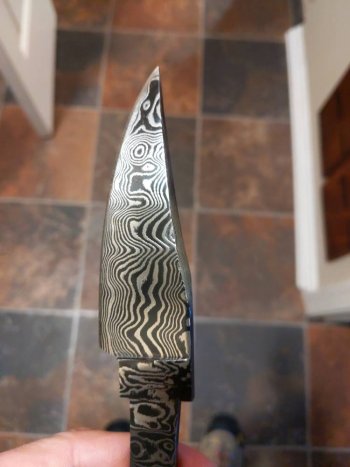You guys are making a fork in the road, so I thought I'd just run with it!

IF you want to keep that maximum contrast on damascus blades, the most durable/lasting method is.....
***First, the finer and tighter the pattern on a damascus blade....the better the following works....
1. Etch the blade fairly deep.... to the point that you can feel the topography with your fingertip.
2. Neutralize and Clean the blade thoroughly.
3. Using an airbrush, and GLOSS BLACK Gun-Kote, apply it to the entire blade.
4. Bake the coating on
5. Once the baking is finished, and the blade is cooled, use a HARD sanding stick, and 800+ paper, GENTLY hand sand the blade, What you are seeking to do, is remove the gloss black Gun-Kote from the HIGH areas of the blade's topography..... and LEAVE THE GLOSS BLACK Gun-Kote in the low areas of topography.
6. Once you have achieved removing the gloss black from the high areas of the topography, clean the blade well, THEN go through the procedures you would for coating the blade with clear Gun-Kote.
*** Super high contrast, extreme durability, and it makes for near zero maintenance for a damascus blade, which in my experience is a high thing for knife buyers.

***
Here's an example.... this one is just the gloss black, and hasn't been recoated with clear yet.







